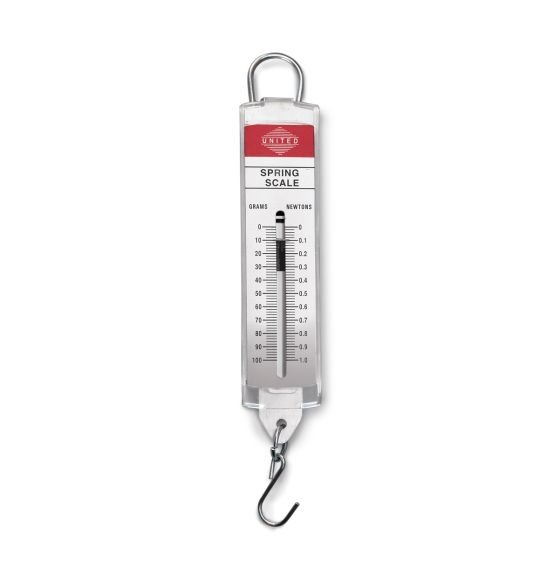A spring scale is also known as a spring balance, a newton-meter or a spring balance. It is a type of force gauge or weighing scale. The spring scale includes a spring with a hook at one end to allow for the attachment of various objects at the opposite end.
Hooke’s Law states that the force required to extend a spring is proportional to its distance from its rest position. The spring balance’s scale markings are equally spaced. This unit cannot measure mass, but only weight.
The spring balance can also be calibrated to measure mass precisely in the area it is being used. Many of them are clearly marked that they aren’t legal for trade. This is because of the theory used to mark the scale. A spring can become permanently stretched if it is used repeatedly.
Only a newton meter can provide accurate measurements within a reference frame where we are talking of constant acceleration in the spring axis. This is similar to the way gravity influences acceleration on Earth. You can test this by putting the spring scale in an elevator.
Because of shifting velocities, the weight being measured will fluctuate as the elevator moves up or down. You can place more than one spring scale below the other. All balances will display the same weight as the body attached to the lower scale.
The scale at the bottom should be a little heavier as it supports the weight of other scales.
Size
All spring scales may not be the same size. The balances that measure newtons are smaller and have a spring that’s less firm. The larger balances measure thousands, hundreds or even thousands of newtons. The largest spring balance is between 5000 to 8000 newtons.
Readings
The device can be labeled using both units of force (poundals and Newtons) and mass (which are pounds, kilograms, or grams). It is important to know that the force values are only used for labeling.
To ensure accurate readings, the object should be attached to the spring in an inertial reference frame. It should also not interact with other objects.
What’s it used for?
A hanging scale is used to weigh large loads such as trucks or material transported on conveyor belts. It’s also used as a basic accelerator in science education.
This is used when other types of scales are less precise for cost, robustness, or simplicity. The force of gravity is countered by a spring, which measures the weight of an object.
History
Richard Slater, a British inventor of spring scales, made the first one in Britain around 1770. He was located near Wolverhampton. He founded George Salter & Co. with his nephews John and George. This company is still a major maker of scales and balances.
In 1838, he also patent the spring balance. This same principle of spring balance was used to safety valves for steam locomotives. These valves could be replaced by the older deadweight ones.
Things to Consider
The spring balance should measure weight easily. The user may be using the spring balance to measure weight. It is important that the numbers are easy to read, and should be at eye level. A unit should have small marks to indicate the weight.
The lines and divisions between numbers or hash marks must be equally spaced. A spring balance’s range is the weight it can measure. If the spring balance is intended to be used with heavy objects, this detail is very important.
The largest mechanical hanging scales are capable of measuring up to 100 kg, while smaller models can measure 250g to 5kg. Some models can measure up to five newtons while others are 11 pounds. It is crucial to first understand the purpose of a spring scale before you can choose a model.
